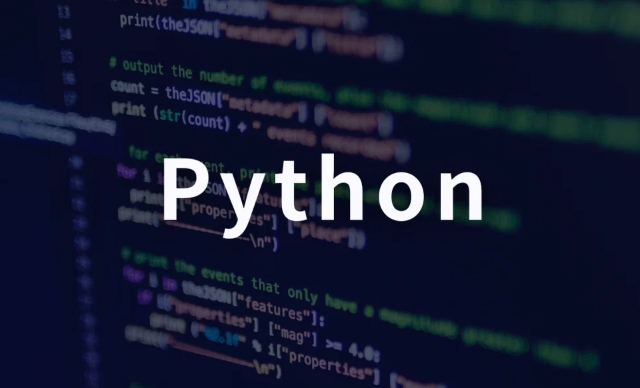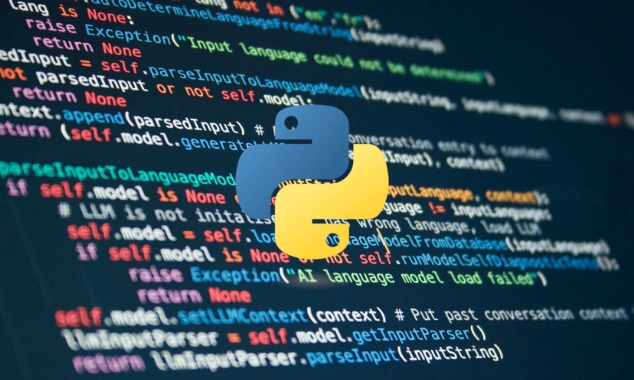async for is a feature used in Python asynchronous programming to traverse asynchronous iterable objects and must be used in the async def function. 1. It relies on two asynchronous methods: aider and anext, where aiter returns the asynchronous iterator itself, __anext__ returns the value of awaitable and needs to throw StopAsyncIteration to end the loop; 2. It is often used to deal with asynchronous data flow, such as network requests, database queries, etc., such as using aiohttp to stream to read HTTP response content or obtain database records one by one through asyncpg; 3. It can also be combined with async yield to implement asynchronous generators, such as asynchronous counters; 4. When using it, you need to pay attention to correctly implementing exception handling, avoiding dead loops, and distinguishing them from different application scenarios of ordinary for.

Python's async for is a very useful feature in asynchronous programming, mainly used to traverse asynchronous iterable objects. It is usually used with async def __aiter__ and async def __anext__ methods, and is a way to deal with asynchronous data flows.

What is asynchronous iteration?
In Python, ordinary loops for can be used to traverse objects that implement __iter__ and __next__ methods. Asynchronous iteration is a similar concept, but it is suitable for asynchronous scenarios, such as reading data from the network and obtaining records from the database in batches.
There are two key methods for asynchronous iterators:

-
__aiter__: Returns an asynchronous iterator. -
__anext__: Returns the value of the next awaitable.
These methods must be defined with async def so that they can be called in async for loop.
Basic usage of async for
Suppose you have an asynchronous data source, such as receiving messages from the network one by one, you can write this:

class AsyncMessageStream:
def __init__(self, messages):
self.messages = messages
self.index = 0
def __aiter__(self):
Return self
async def __anext__(self):
if self.index >= len(self.messages):
raise StopAsyncIteration
message = self.messages[self.index]
self.index = 1
await asyncio.sleep(0.1) # simulate asynchronous operation return message Then use async for to iterate through this stream:
async def read_messages():
async for msg in AsyncMessageStream(["hello", "world"]):
print(msg) This code will print out "hello" and "world" in turn, and will wait for a short time each time.
Common application scenarios
1. Read files or network data asynchronously When you need to read a large file line by line or receive multiple messages from WebSocket, you can use async for to implement non-blocking item by item processing.
For example, use aiohttp to get HTTP streaming response content:
async with session.get('http://example.com/stream') as resp:
async for line in resp.content:
process(line) 2. Database query results streaming Some asynchronous database drivers (such as asyncpg or motor ) support getting query results one by one instead of loading all data at once.
3. Custom asynchronous generator In addition to the class method, you can also use async def yield to build an asynchronous generator:
async def async_counter(limit):
for i in range(limit):
await asyncio.sleep(0.1)
yield iThen use it like this:
async for number in async_counter(5):
print(number)Notes on using
-
async formust be used in theasync deffunction. - If you implement asynchronous iteration in your custom class, make sure that
StopAsyncIterationis thrown correctly, otherwise you may fall into a dead loop. - Don't confuse
async forand ordinaryfor, they deal with different types of iterators. - The
__anext__method in the asynchronous iterator must be a coroutine function (i.e. a function defined byasync def).
Basically that's it. After understanding the relationship between asynchronous iterator and async for , you will find that it is not complicated in fact, but it is easy to ignore some details, such as interface definition and exception handling.
The above is the detailed content of Python async for explained. For more information, please follow other related articles on the PHP Chinese website!

Hot AI Tools

Undress AI Tool
Undress images for free

Undresser.AI Undress
AI-powered app for creating realistic nude photos

AI Clothes Remover
Online AI tool for removing clothes from photos.

Clothoff.io
AI clothes remover

Video Face Swap
Swap faces in any video effortlessly with our completely free AI face swap tool!

Hot Article

Hot Tools

Notepad++7.3.1
Easy-to-use and free code editor

SublimeText3 Chinese version
Chinese version, very easy to use

Zend Studio 13.0.1
Powerful PHP integrated development environment

Dreamweaver CS6
Visual web development tools

SublimeText3 Mac version
God-level code editing software (SublimeText3)

Hot Topics
 What are python iterators?
Jul 08, 2025 am 02:56 AM
What are python iterators?
Jul 08, 2025 am 02:56 AM
InPython,iteratorsareobjectsthatallowloopingthroughcollectionsbyimplementing__iter__()and__next__().1)Iteratorsworkviatheiteratorprotocol,using__iter__()toreturntheiteratorand__next__()toretrievethenextitemuntilStopIterationisraised.2)Aniterable(like
 How to iterate over two lists at once Python
Jul 09, 2025 am 01:13 AM
How to iterate over two lists at once Python
Jul 09, 2025 am 01:13 AM
A common method to traverse two lists simultaneously in Python is to use the zip() function, which will pair multiple lists in order and be the shortest; if the list length is inconsistent, you can use itertools.zip_longest() to be the longest and fill in the missing values; combined with enumerate(), you can get the index at the same time. 1.zip() is concise and practical, suitable for paired data iteration; 2.zip_longest() can fill in the default value when dealing with inconsistent lengths; 3.enumerate(zip()) can obtain indexes during traversal, meeting the needs of a variety of complex scenarios.
 How to call Python from C ?
Jul 08, 2025 am 12:40 AM
How to call Python from C ?
Jul 08, 2025 am 12:40 AM
To call Python code in C, you must first initialize the interpreter, and then you can achieve interaction by executing strings, files, or calling specific functions. 1. Initialize the interpreter with Py_Initialize() and close it with Py_Finalize(); 2. Execute string code or PyRun_SimpleFile with PyRun_SimpleFile; 3. Import modules through PyImport_ImportModule, get the function through PyObject_GetAttrString, construct parameters of Py_BuildValue, call the function and process return
 What is a forward reference in Python type hints for classes?
Jul 09, 2025 am 01:46 AM
What is a forward reference in Python type hints for classes?
Jul 09, 2025 am 01:46 AM
ForwardreferencesinPythonallowreferencingclassesthatarenotyetdefinedbyusingquotedtypenames.TheysolvetheissueofmutualclassreferenceslikeUserandProfilewhereoneclassisnotyetdefinedwhenreferenced.Byenclosingtheclassnameinquotes(e.g.,'Profile'),Pythondela
 What is descriptor in python
Jul 09, 2025 am 02:17 AM
What is descriptor in python
Jul 09, 2025 am 02:17 AM
The descriptor protocol is a mechanism used in Python to control attribute access behavior. Its core answer lies in implementing one or more of the __get__(), __set__() and __delete__() methods. 1.__get__(self,instance,owner) is used to obtain attribute value; 2.__set__(self,instance,value) is used to set attribute value; 3.__delete__(self,instance) is used to delete attribute value. The actual uses of descriptors include data verification, delayed calculation of properties, property access logging, and implementation of functions such as property and classmethod. Descriptor and pr
 Parsing XML data in Python
Jul 09, 2025 am 02:28 AM
Parsing XML data in Python
Jul 09, 2025 am 02:28 AM
Processing XML data is common and flexible in Python. The main methods are as follows: 1. Use xml.etree.ElementTree to quickly parse simple XML, suitable for data with clear structure and low hierarchy; 2. When encountering a namespace, you need to manually add prefixes, such as using a namespace dictionary for matching; 3. For complex XML, it is recommended to use a third-party library lxml with stronger functions, which supports advanced features such as XPath2.0, and can be installed and imported through pip. Selecting the right tool is the key. Built-in modules are available for small projects, and lxml is used for complex scenarios to improve efficiency.
 how to avoid long if else chains in python
Jul 09, 2025 am 01:03 AM
how to avoid long if else chains in python
Jul 09, 2025 am 01:03 AM
When multiple conditional judgments are encountered, the if-elif-else chain can be simplified through dictionary mapping, match-case syntax, policy mode, early return, etc. 1. Use dictionaries to map conditions to corresponding operations to improve scalability; 2. Python 3.10 can use match-case structure to enhance readability; 3. Complex logic can be abstracted into policy patterns or function mappings, separating the main logic and branch processing; 4. Reducing nesting levels by returning in advance, making the code more concise and clear. These methods effectively improve code maintenance and flexibility.
 Implementing multi-threading in Python
Jul 09, 2025 am 01:11 AM
Implementing multi-threading in Python
Jul 09, 2025 am 01:11 AM
Python multithreading is suitable for I/O-intensive tasks. 1. It is suitable for scenarios such as network requests, file reading and writing, user input waiting, etc., such as multi-threaded crawlers can save request waiting time; 2. It is not suitable for computing-intensive tasks such as image processing and mathematical operations, and cannot operate in parallel due to global interpreter lock (GIL). Implementation method: You can create and start threads through the threading module, and use join() to ensure that the main thread waits for the child thread to complete, and use Lock to avoid data conflicts, but it is not recommended to enable too many threads to avoid affecting performance. In addition, the ThreadPoolExecutor of the concurrent.futures module provides a simpler usage, supports automatic management of thread pools and asynchronous acquisition






